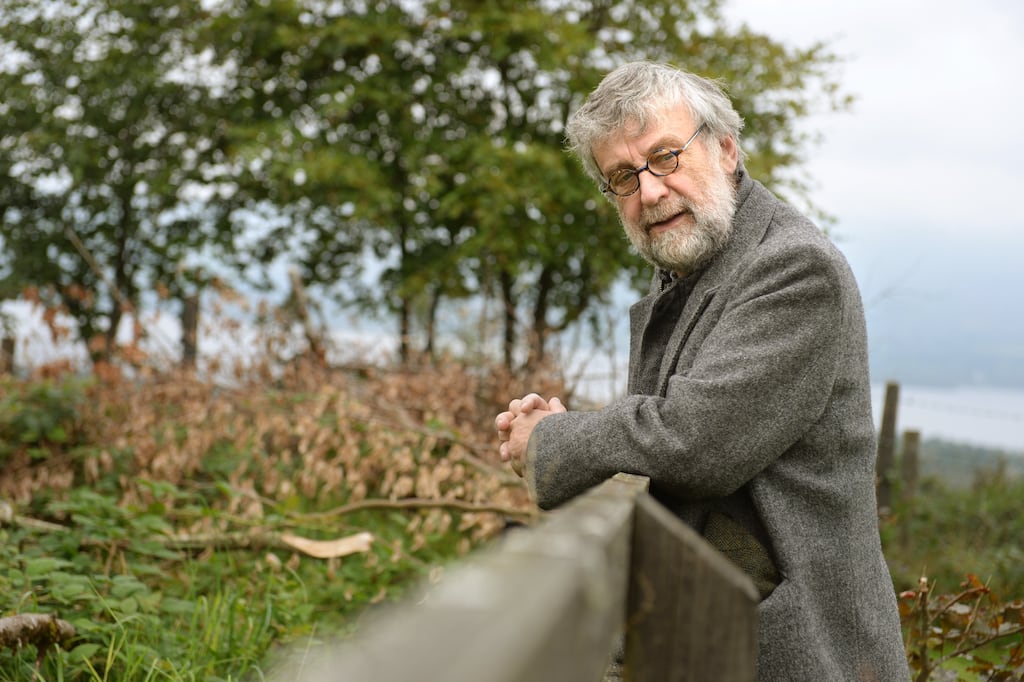Last year I was in Beaumont, recovering from an operation. I lay in bed with 30 staples along my spine. And I was so proud of them that I took a photograph with the aid of a mirror in the hospital bathroom. If the illness arose as a subject of conversation in the future, I would have an image with which to impress my listeners.
The custom of brandishing scars at a dinner table was widespread in the Cavan of my childhood. I often saw men opening their shirts to display the white line of the knife along their ribcage after open-heart surgery, as if they were displaying All-Ireland medals. My little staples were not so dramatic. They looked more like a zip, or sleepers for a tiny train.
I moped around the garden, lingered in the bedroom or lay on the sofa as a stream of Netflix movies assaulted my tranquillity
But at least I had a few colourful details about the operation to spice up any narrative. For example, someone attached cod liver oil capsules to my spine with a strip of adhesive tape before the operation. They X-rayed me with the capsules in place so that the doctors would have a precise map of my spine to work with when they cut the flesh.
When I emerged from hospital I wasn’t in a mood for visitors. I moped around the garden, lingered in the bedroom or lay on the sofa as a stream of Netflix movies assaulted my tranquillity. And when I tried to get up from the sofa, it was almost impossible.
Diarmaid Ferriter: Forget an apple for the teacher. What they really need is a Valium
Rosie O’Donnell on her new life in Dublin: ‘I see reflections of myself in this country everywhere I look’
The reality of life at ‘just’ 1.5 degrees of warming
Analysis: This is a shocker of an opinion poll for Fine Gael
That’s when I remembered the walking stick.
It was in my office for years. The shaft was made from blackthorn, and the handle was crafted from the jawbone of a goat. It was a gift, and I used it once in a theatre show, in which I played an old man recounting a tragic tale; the stick gave me a kind of authenticity on stage that the drama required.
But I never used it in real life. It was a theatrical prop. And it ended up hanging on the wall just beside the bookcase, where I keep my religious icons. And sometimes it too acquired the air of a sacred object.
Walking sticks demanded my attention as a child. My granny had one. And a blind man who lived next door to her on Bridge Street had another. He would sit in the sun with a handkerchief on his bald head and his knuckles wound around the top of his stick. In fact, I can’t remember any old people who didn’t have sticks in those days. It’s amazing how hip replacements can transform the world.
There was nothing lucky about the doctors and nurses in Beaumont; their healing power was transmitted to me through touch and sensation
As a child I was brought to Knock on several occasions, and sometimes to holy wells. Meandering through the crowds, I could not avoid the panoply of crude walking aids and crutches hanging from ledges or fastened to various walls — free-floating canes and crutches proclaiming that some miracle had happened there. Some wondrous cure had been obtained at the gable of that particular church or this particular well.
I imagined the afflicted pilgrims being healed so dramatically that they just flung the crutches away from them. But I would have been terrified to touch a crutch or prosthetic limb. I had a vague notion that the disease of the pilgrim might remain in the crutch after the pilgrim had been cured. The stick or walking aid embodied pain, and if I dared to touch it some mysterious disease might flow down the shaft, into my body; such was my limited grasp of science.
But that’s the way fear and awe operate. I had no language to contain the reality of suffering; so I could only construct meaning from symbols. Illness was about touch and sensation and objects that carried fearful magic; like the wands of wizards or the crooks of the white-haired bishop or the stick of the blind man who used it to beat out the time when he lilted a jig.
[ Michael Harding: How a car crash in Mullingar helped reawaken my soulOpens in new window ]
When I got through the operation people said I was lucky. But that’s not how I saw it. There was nothing lucky about the doctors and nurses in Beaumont; their healing power was transmitted to me through touch and sensation. And afterwards the walking stick became a symbol of that grace. I felt not lucky, but grateful.
After a while I could rise from the sofa like a lark from it’s boggy nest, and the stick returned to the wall beside the bookcase of holy objects. Because it too was a symbol. A wand of invisible healing. An icon of the wound where the light came in.














